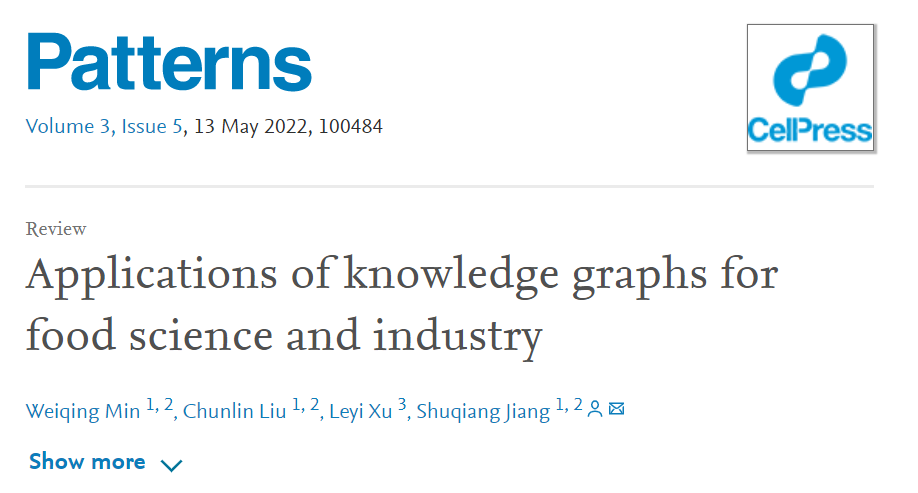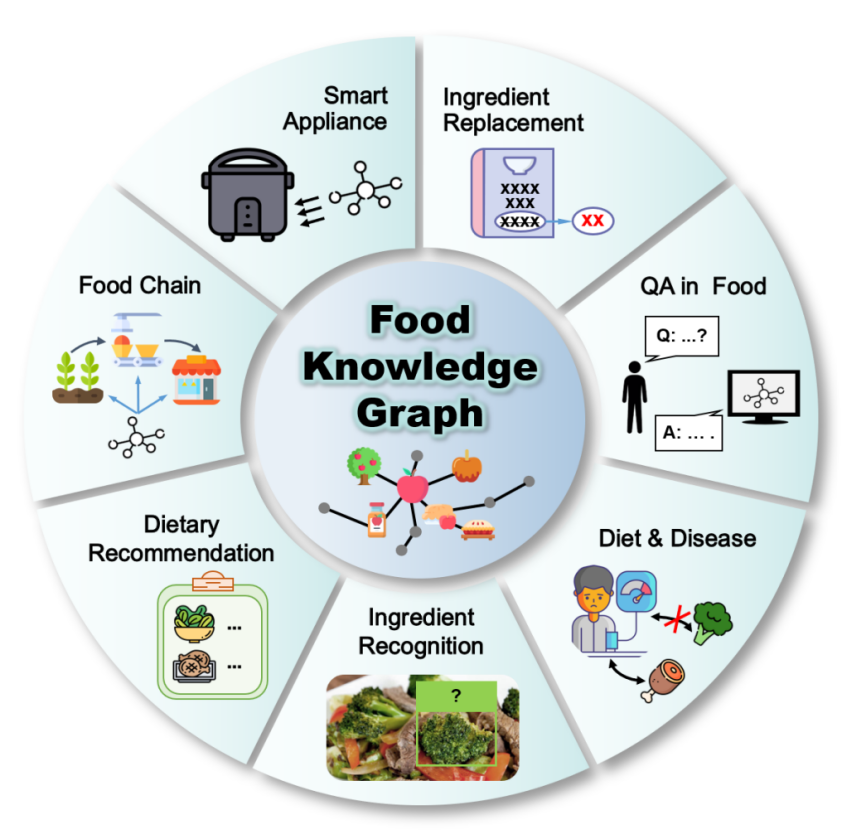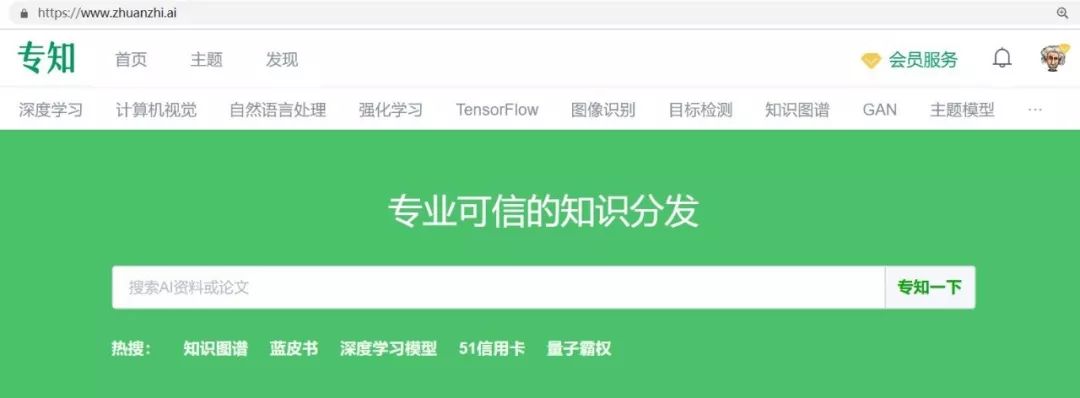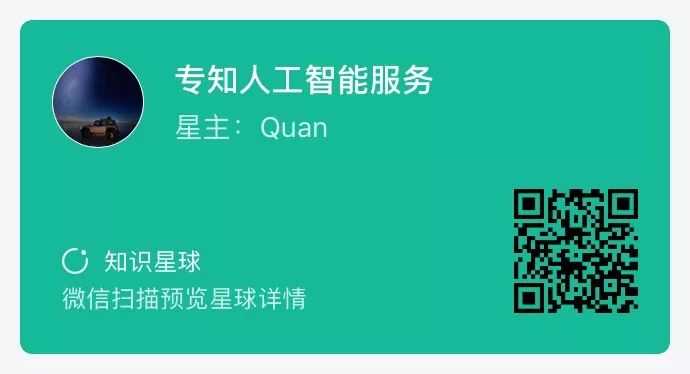[1] Global Panel on Agriculture and Food Systems for Nutrition Future food systems: for people, our planet, and prosperity. Technical report Glob. Panel Agric. Food Syst. Nutr. (2020)
[2] G. V. S. Bhagya Raj and Kshirod K. Dash. Comprehensive study on applications of artificial neural network in food process modeling. Critical Reviews in Food Science and Nutrition, pages 1–28, 2020.
[3] Qing Sun, Min Zhang, and Arun S. Mujumdar. Recent developments of artificial intelligence in drying of fresh food: A review. Critical Reviews in Food Science and Nutrition, 59(14):2258–2275, 2019.
[4] Hanieh Amani, Katalin Kerti Badakné, and Amin Mousavi Khaneghah. Current progress in the utilization of smartphone-based imaging for quality assessment of food products: A review. Critical Reviews in Food Science and Nutrition, pages 1–13, 12 2020.
[5] Simon Knez and Luka Šajn. Food object recognition using a mobile device: Evaluation of currently implemented systems. Trends in Food Science & Technology, 99:460–471, 2020.
[6] Marcus Klasson, Cheng Zhang, and Hedvig Kjellström. Using variational multi-view learning for classification of grocery items. Patterns, 1(8):100143, 2020.
[7] Yao Liu, Hongbin Pu, and Da-Wen Sun. Efficient extraction of deep image features using convolutional neural network (CNN) for applications in detecting and analysing complex food matrices. Trends in Food Science & Technology, 113:193–204, 2021.
[8] Ning Liang, Sashuang Sun, Chu Zhang, Yong He, and Zhengjun Qiu. Advances in infrared spectroscopy combined with artificial neural network for the authentication and traceability of food. Critical Reviews in Food Science and Nutrition, pages 1–22, 2020.
[9] Quin Thames, Arjun Karpur, Wade Norris, Fangting Xia, Liviu Panait, Tobias Weyand, and Jack Sim. Nutrition5k: Towards automatic nutritional understanding of generic food. In Proceedings of the IEEE/CVF Conference on Computer Vision and Pattern Recognition, pages 8903–8911, 2021.
[10] Larissa Oliveira Chaves, Ana Luiza Gomes Domingos, Daniel Louzada Fernandes, Fabio Ribeiro Cerqueira, Rodrigo Siqueira-Batista, and Josefina Bressan. Applicability of machine learning techniques in food intake assessment: A systematic review. Critical Reviews in Food Science and Nutrition, pages 1–18, 2021.
[11] N. N. Misra, Yash Dixit, Ahmad Al-Mallahi, Manreet Singh Bhullar, Rohit Upadhyay, and Alex Martynenko. IoT, big data and artificial intelligence in agriculture and food industry. IEEE Internet of Things Journal, pages 1–1, 2020.
[12] Jianping Qian, Bingye Dai, Baogang Wang, Yan Zha, and Qian Song. Traceability in food processing: Problems, methods, and performance evaluations—a review. Critical Reviews in Food Science and Nutrition, pages 1–14, 2020
[13] Heiko Paulheim. Knowledge graph refinement: A survey of approaches and evaluation methods. Semantic Web, 8(3):489–508, 2017.
[14] Haussmann Steven, Chen Yu, Seneviratne Oshani, Rastogi Nidhi, Codella James, Chen Ching-Hua, McGuinness Deborah, and J. Zaki Mohammed. FoodKG enabled Q&A application. In Proceedings of International Semantic Web Conference, 2019.
[15] Allan M Collins and M Ross Quillian. Retrieval time from semantic memory. Journal of verbal learning and verbal behavior, 8(2):240–247, 1969.
[16] Amit Singhal. Introducing the knowledge graph: Things, not strings, 2012.
[17] Amélie Cordier, Valmi Dufour-Lussier, Jean Lieber, Emmanuel Nauer, Fadi Badra, Julien Cojan, Emmanuelle Gaillard, Laura Infante-Blanco, Pascal Molli, Amedeo Napoli, and Hala Skaf-Molli. Taaable: A case-based system for personalized cooking. Studies in Computational Intelligence, 494:121–162, 01 2014.
[18] Fernando Batista, J. Paulo, Nuno Mamede, H. Vaz, and Ricardo Ribeiro. Ontology construction: Cooking domain. Artificial Intelligence: Methodology, Systems, and Applications, 4183:213–221, 01 2006.
[19] Jaime Cantais, David Dominguez, Valeria Gigante, Loredana Laera, and Valentina Tamma. An example of food ontology for diabetes control. In Proceedings of the International Semantic Web Conference 2005 workshop on Ontology Patterns for the Semantic Web, 2005.
[20] C. Snae and M. Bruckner. FOODS: A food-oriented ontology-driven system. In IEEE International Conference on Digital Ecosystems and Technologies, pages 168–176, 2008
[21] Mauro Dragoni, Tania Bailoni, Rosa Maimone, and Claudio Eccher. HeLiS: An ontology for supporting healthy lifestyles. In The Semantic Web – International Semantic Web Conference 2018, pages 53–69, 2018.
[22] Shakir Karim, Umair Shaikh, Quratulain Rajput, and Zaheeruddin Asif. Ontology-based personalized dietary recommendation for travelers. In Southern association for information systems conference, 2015.
[23] Francesco Vitali, Rosario Lombardo, Damariz Rivero, Fulvio Mattivi, Pietro Franceschi, Alessandra Bordoni, Alessia Trimigno, Francesco Capozzi, Giovanni Felici, Francesco Taglino, Franco Miglietta, Nathalie De Cock, Carl Lachat, Bernard De Baets, Guy De Tré, Mariona Pinart, Katharina Nimptsch, Tobias Pischon, Jildau Bouwman, Duccio Cavalieri, and the ENPADASI consortium. ONS: An ontology for a standardized description of interventions and observational studies in nutrition. Genes & Nutrition, 13(1):12, 2018.
[24] Muhammad Amith, Chidinma Onye, Tracey Ledoux, Grace Xiong, and Cui Tao. The ontology of fast food facts: conceptualization of nutritional fast food data for consumers and semantic web applications. BMC medical informatics and decision making, 21(7):1–16, 2021.
[25] Teresa Pizzuti, Giovanni Mirabelli, Giovanni Grasso, and Giulia Paldino. MESCO (meat supply chain ontology): An ontology for supporting traceability in the meat supply chain. Food Control, 72:123–133, 2017.
[26] Li Qin, Zhigang Hao, and Liang Zhao. Food safety knowledge graph and question answering system. In Proceedings of International Conference on Information Technology: IoT and Smart City, pages 559–564, 2019.
[27] Vinu Sherimon, PC Sherimon, Alaa Ismaeel, Winny Varkey, and B Naveen. Modeling of seafood domain using ontology. International Journal of Open Information Technologies, 9(2):65–69, 2021.
[28] Damion M. Dooley, Emma J. Griffiths, Gurinder S. Gosal, Pier L. Buttigieg, Robert Hoehndorf, Matthew C. Lange, Lynn M. Schriml, Fiona S. L. Brinkman, and William W. L. Hsiao. FoodOn: A harmonized food ontology to increase global food traceability, quality control and data integration. npj Science of Food, 2, 2018.
[29] Tome Eftimov, Gordana Ispirova, Peter Korošec, and Barbara Seljak. The RICHFIELDS framework for semantic interoperability of food information across heterogenous information systems. In Proceedings of International Joint Conference on Knowledge Discovery, Knowledge Engineering and Knowledge Management, volume 1, pages 315–322, 09 2018.
[30] Unai Zulaika, Asier Gutiérrez, and Diego López-de-Ipiña. Enhancing profile and context aware relevant food search through knowledge graphs. In International Conference on Ubiquitous Computing and Ambient Intelligence, volume 2, page 1228, 2018.
[31] Zhenfeng Lei, Anwar Ul Haq, Adnan Zeb, Md Suzauddola, and Defu Zhang. Is the suggested food your desired?: Multi-modal recipe recommendation with demand-based knowledge graph. Expert Systems with Applications, 186:115708, 2021.
[32] Yang Chi, Congcong Yu, Xiaohui Qi, and Hao Xu. Knowledge management in healthcare sustainability: A smart healthy diet assistant in traditional Chinese medicine culture. Sustainability, 10(11), 2018.
[33] Haussmann Steven, Chen Yu, Seneviratne Oshani, Rastogi Nidhi, Codella James, Chen Ching-Hua, McGuinness Deborah, and J. Zaki Mohammed. FoodKG enabled Q&A application. In Proceedings of International Semantic Web Conference, 2019.
[34] Lan Huang, Congcong Yu, Yang Chi, Xiaohui Qi, and Hao Xu. Towards smart healthcare management based on knowledge graph technology. In Proceedings of the International Conference on Software and Computer Applications, page 330–337, 2019.
[35] Soodabeh Milanlouei, Giulia Menichetti, Yanping Li, Joseph Loscalzo, Walter C Willett, and Albert-László Barabási. A systematic comprehensive longitudinal evaluation of dietary factors associated with acute myocardial infarction and fatal coronary heart disease. Nature communications, 11(1):1–14, 2020.
[36] Li Qin, Zhigang Hao, and Liang Zhao. Food safety knowledge graph and question answering system. In Proceedings of International Conference on Information Technology: IoT and Smart City, pages 559–564, 2019
[37] Li Qin, Zhigang Hao, and LiPing Yang. Question answering system based on food spot-check knowledge graph. In Proceedings of International Conference on Computing and Data Engineering, ICCDE 2020, page 168–172, 2020
[38] Yuanzhe Chen, Jun Kuang, Dawei Cheng, Jianbin Zheng, Ming Gao, and Aoying Zhou. AgriKG: An agricultural knowledge graph and its applications. In Database Systems for Advanced Applications, pages 533–537, 2019.
[39] Ali Rostami, Zhouhang Xie, Akihisa Ishino, Yoko Yamakata, Kiyoharu Aizawa, and Ramesh Jain. World Food Atlas Project. In Proceedings of International Workshop on Multimedia for Cooking and Eating Activities, pages 33–36, 2021.
[40] Sola Shirai, Oshani Seneviratne, Minor Gordon, Ching-Hua Chen, Deborah L McGuinness, Nidhi Rastogi, et al. Semantics-driven ingredient substitution in the FoodKG. In The Semantic Web – International Semantic Web Conference, volume 2721, pages 242–247, 2020.
[41] Sola S. Shirai, Oshani Seneviratne, Minor E. Gordon, Ching-Hua Chen, and Deborah L. McGuinness. Identifying ingredient substitutions using a knowledge graph of food. Frontiers in Artificial Intelligence, 3, 2021.
[42] Florian Pinel, Lav R. Varshney, and Debarun Bhattacharjya. A Culinary Computational Creativity System, pages 327–346. Atlantis Press, Paris, 2015.
[43] Jayne V Woodside, Ian S Young, and Michelle C McKinley. Fruit and vegetable intake and risk of cardiovascular disease. Proceedings of the Nutrition Society, 72(4):399–406, 2013.
[44] Ashkan Afshin, Patrick John Sur, Kairsten A. Fay, Leslie Cornaby, Giannina Ferrara, et al. Health effects of dietary risks in 195 countries, 1990–2017: A systematic analysis for the Global Burden of Disease Study 2017. The Lancet, 393(10184):1958–1972, 2019.
[45] Zhiyun Zhao, Mian Li, Chao Li, Tiange Wang, Yu Xu, Zhizheng Zhan, Weishan Dong, Zhiyong Shen, Min Xu, Jieli Lu, Yuhong Chen, Shenghan Lai, Wei Fan, Yufang Bi, Weiqing Wang, and Guang Ning. Dietary preferences and diabetic risk in China: A large-scale nationwide Internet data-based study. Journal of Diabetes, 12(4):270–278, 2020.
[46] James Joseph, Greg Cole, Elizabeth Head, and Donald Ingram. Nutrition, brain aging, and neurodegeneration. The Journal of neuroscience : the official journal of the Society for Neuroscience, 29(41):12795–12801, 2009. 35 Food Knowledge Graph
[47] Jingjing Chen, Liangming Pan, Zhipeng Wei, Xiang Wang, ChongWah Ngo, and Tatseng Chua. Zero-shot ingredient recognition by multi-relational graph convolutional network. In Proceedings of the AAAI Conference on Artificial Intelligence, volume 34, pages 10542–10550, 2020.
[48] Hongwei Wang, Fuzheng Zhang, Jialin Wang, Miao Zhao, Wenjie Li, Xing Xie, and Minyi Guo. RippleNet: Propagating user preferences on the knowledge graph for recommender systems. In Proceedings of ACM International Conference on Information and Knowledge Management, pages 417–426, 2018.
[49] Chang-Shing Lee, Mei-Hui Wang, Huan-Chung Li, and Wen-Hui Chen. Intelligent ontological agent for diabetic food recommendation. In IEEE International Conference on Fuzzy Systems, pages 1803–1810, June 2008.
[50] Piyaporn Tumnark, Leandro Oliveira, and Nonchai Santibutr. Ontology-based personalized dietary recommendation for weightlifting. In Proceedings of International Workshop on Computer Science in Sports, 2013.
[51] Vanesa Espín, María V. Hurtado, Manuel Noguera, and Kawtar Benghazi. Semantic-based recommendation of nutrition diets for the elderly from agroalimentary thesauri. In Flexible Query Answering Systems, pages 471–482, 2013.
[52] Jamshed Iqbal, Zeashan Hameed Khan, and Azfar Khalid. Prospects of robotics in food industry. Food Science and Technology, 37:159–165, 2017
[53] Javier Marín, Aritro Biswas, Ferda Ofli, Nicholas Hynes, Amaia Salvador, Yusuf Aytar, Ingmar Weber, and Antonio Torralba. Recipe1M+: A dataset for learning cross-modal embeddings for cooking recipes and food images. IEEE Transactions on Pattern Analysis and Machine Intelligence, 43(1):187–203, 2021.
[54] Dim P. Papadopoulos, Youssef Tamaazousti, Ferda Ofli, Ingmar Weber, and Antonio Torralba. How to make a pizza: Learning a compositional layer-based GAN model. In IEEE/CVF Conference on Computer Vision and Pattern Recognition, pages 7994–8003, 2019.
[55] Hao Wang, Guosheng Lin, Steven C. H. Hoi, and Chunyan Miao. Structure-aware Generation Network for recipe generation from images. In European Conference on Computer Vision, volume 12372, pages 359–374, 2020.
[56] Donghyeon Park, Keonwoo Kim, Seoyoon Kim, Michael Spranger, and Jaewoo Kang. FlavorGraph: A largescale food-chemical graph for generating food representations and recommending food pairings. Scientific Reports, 11(1), 2021.
[57] Zonghan Wu, Shirui Pan, Fengwen Chen, Guodong Long, Chengqi Zhang, and S Yu Philip. A comprehensive survey on graph neural networks. IEEE Transactions on Neural Networks and Learning Systems, 32(1):4–24, 2021.
[58] Dandan Tao, Pengkun Yang, and Hao Feng. Utilization of text mining as a big data analysis tool for food science and nutrition. Comprehensive Reviews in Food Science and Food Safety, 19(2):875–894, 2020.
[59] Heather Greenfield and David AT Southgate. Food Composition Data: Production, Management, and Use. Food & Agriculture Org., 2003.
[60] Shanquan Chen, Dandan Huang, Wenyan Nong, and Hoi Shan Kwan. Development of a food safety information database for Greater China. Food Control, 65:54–62, 2016.
[61] Hans J. P. Marvin, Esmée M. Janssen, Yamine Bouzembrak, Peter J. M. Hendriksen, and Martijn Staats. Big data in food safety: An overview. Critical Reviews in Food Science and Nutrition, 57(11):2286–2295, 2017.
[62] Stavros Bashiardes, Anastasia Godneva, Eran Elinav, and Eran Segal. Towards utilization of the human genome and microbiome for personalized nutrition. Current Opinion in Biotechnology, 51:57–63, 2018.
[63] Hoang Long Nguyen, Dang Thinh Vu, and Jason J. Jung. Knowledge graph fusion for smart systems: A survey. Information Fusion, 61:56–70, 2020.
[64] Nicholas M. Holden, Eoin P. White, Matthew. C. Lange, and Thomas L. Oldfield. Review of the sustainability of food systems and transition using the Internet of Food. npj Science of Food, 2(1):18, 2018.
[65] Weiqing Min, Shuqiang Jiang, Linhu Liu, Yong Rui, and Ramesh Jain. A survey on food computing. ACM Computing Surveys, 52(5):92:1–92:36, 2019.
[66] K. Marino, R. Salakhutdinov, and A. Gupta. The more you know: Using knowledge graphs for image classification. In IEEE Conference on Computer Vision and Pattern Recognition, pages 20–28, 2017.
[67] Simon Knez and Luka Šajn. Food object recognition using a mobile device: Evaluation of currently implemented systems. Trends in Food Science & Technology, 99:460–471, 2020.
[68] Yuan Fang, Kingsley Kuan, Jie Lin, Cheston Tan, and Vijay Chandrasekhar. Object detection meets knowledge graphs. In Proceedings of International Joint Conference on Artificial Intelligence, pages 1661–1667, 2017.
[69] Yuyu Zhang, Hanjun Dai, Zornitsa Kozareva, Alexander Smola, and Le Song. Variational reasoning for question answering with knowledge graph. In Proceedings of the AAAI Conference on Artificial Intelligence, volume 32, pages 6069–6076, 2018.
[70] Xiaojun Chen, Shengbin Jia, and Yang Xiang. A review: Knowledge reasoning over knowledge graph. Expert Systems with Applications, 141:112948, 2020.






